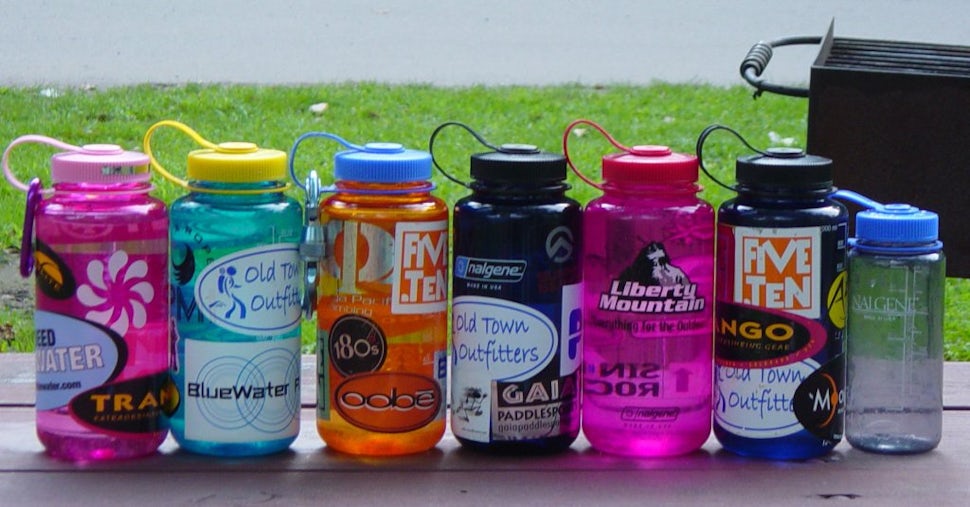Treat your water well
Be sure you have plenty of water and it is safe to drink.

Treat your water well.
Years ago, seven of us planned an overnight backpacking trip starting at Mount Mitchell, camping at Deep Gap, and then returning the way we had come. Our planned journey would take us across Mount Craig, Big Tom, Balsam Cone, Cattail Peak, and Potato Hill. All are at elevations above 6400 feet, meaning water would be scarce. Each person would need to carry enough water to last until we reached a water source at Deep Gap. At least that was the plan.
When we reached the Mount Mitchell visitor center half way up the mountain, we decided to wait and fill our water bottles when we reached the top. At the top of the mountain, the water lines were frozen. We consulted a ranger who said water was readily available where we would be hiking. We set out, each person with only about a quart of water. Four quarts is an average day’s supply when hiking.
About half way through our hike we ran out of water. Without concern we pressed on, thinking water was just around the corner. I had not brought a topographical map of the area, only a simple trail map. A topo map would have shown that creek was a short distance away down a side trail. My trail map made no such notation. Ignorantly we pressed on. It is worth noting the trail followed the path of erosion up and down each mountain. The way was rocky and steep.
One of our companions had just finished working the third shift. Not having slept for over 24 hours, over a mile of altitude, and later being diagnosed with diabetes, she bonked on Balsam Cone. “Bonked” is a word used when a person has reached their physical limit and cannot proceed any further. Just a little better than half way to Deep Gap, she could go no further. We stood at an elevation of 6620 feet with no water and not able to go forward or back without separating. One guy, three women, and 4 middle school kids needed to stay together since there was little daylight left.
Searching around we found old snow melt that had made mud puddles. Straining the mud through a bandana, we were able to squeeze out brown water into a water bottle. Using a water filter we turned the brown mud into clear, sweet drinking water. We could have and should have done this earlier along the trail, but we were in too big of a hurry and had misinterpreted what the ranger had told us. The next morning we hiked back out with the remainder of our snow water. Everyone ordered water when we stopped to eat on the way home.
Everyone from hurricane victims to campers needs to know the proper way to make water drinkable. When treating water, one must decide whether to filter, purify or both. The two important factors that determine this are water sources and susceptibility.
When evaluating water sources it is important to keep the following in mind: In general, protozoa and bacteria infect both animals and humans and are transmitted to water sources by animal and human waste. In contrast, waterborne viruses are species-specific and therefore transmitted to water sources by human waste alone. As a rule of thumb, remote areas with few people require (at least) filtration while popular areas with many human visitors require purification. If traveling in developing countries with poor sanitation, purification will be your safest choice.
Susceptibility is another good way to determine needs. If the treated water is to be consumed by infants or young children, elderly, or pregnant or immunocompromised individuals, then it is essential to use a purifier for the highest level of protection. Purification is also best for people who tend to get sick. If you rarely get sick and do not fit into any categories mentioned above, then filtration may be adequate depending on the water source.
A water filter generally claims to remove protozoa and bacteria, making it adequate for remote wilderness areas. They also reduce tastes, odors, some chemicals, pesticides, and herbicides. A water purifier, in addition to removing or inactivating protozoa and bacteria, also inactivates viruses and is therefore ideal in any situation.
The drought we are currently in makes water consideration for a hike paramount. There are no mud puddles to found and established water sources can run dry. Before you head out into the woods be sure you have enough water, current information on water sources, and a way to treat any water you come across.
Please note that I wrote this article over 5 years ago and there are newer products on the market not mentioned in the article.
We want to acknowledge and thank the past, present, and future generations of all Native Nations and Indigenous Peoples whose ancestral lands we travel, explore, and play on. Always practice Leave No Trace ethics on your adventures and follow local regulations. Please explore responsibly!
Do you love the outdoors?
Yep, us too. That's why we send you the best local adventures, stories, and expert advice, right to your inbox.







